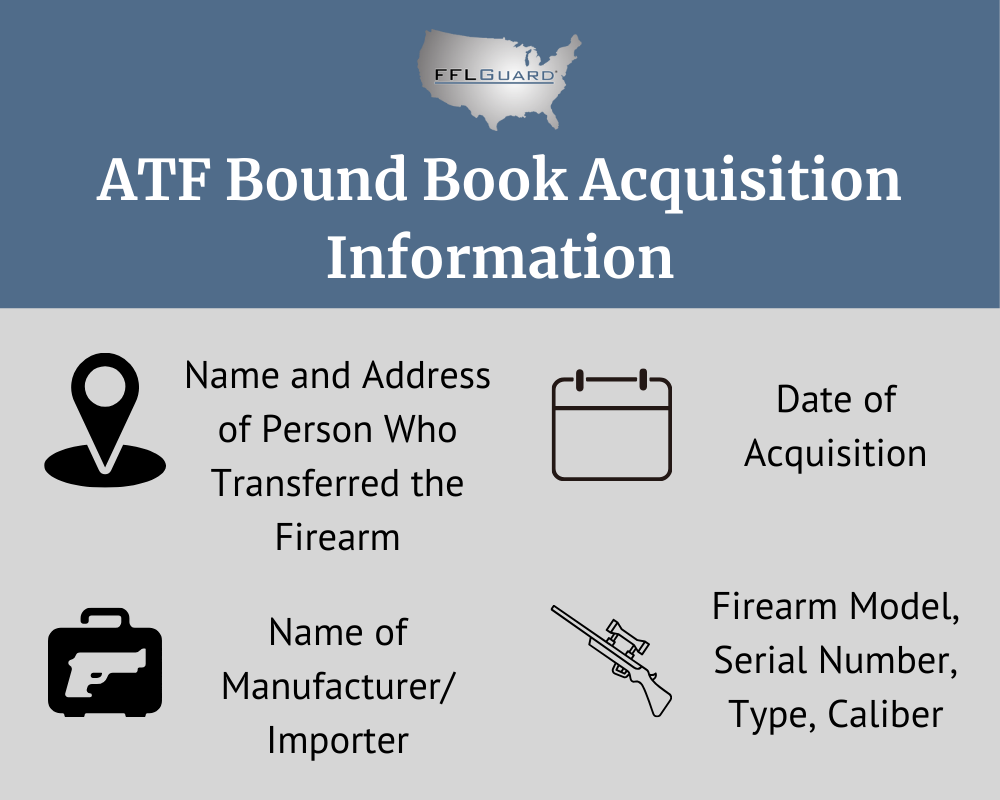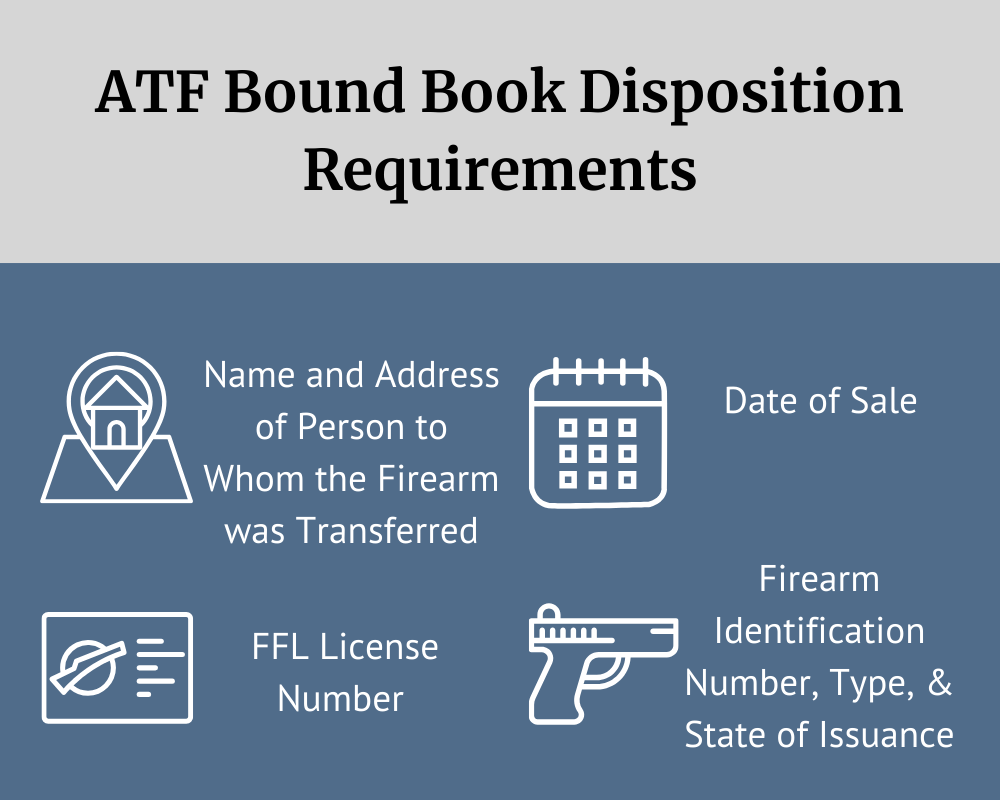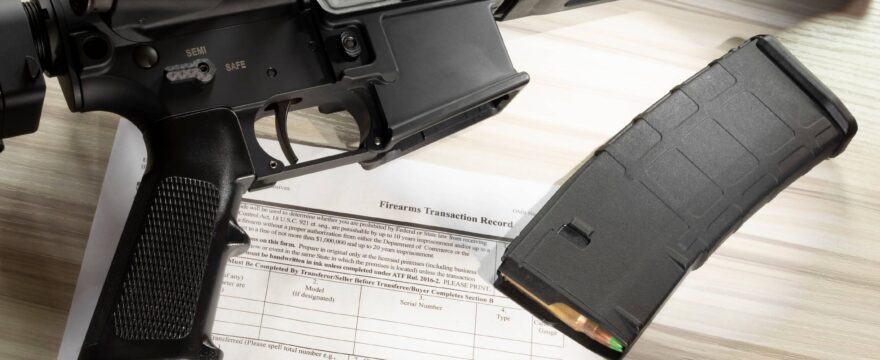As a Federal Firearms Licensee (FFL), maintaining proper records is not just good business practice. It’s a legal requirement with serious consequences for non-compliance. At the center of these recordkeeping obligations is the Acquisition and Disposition Record (A&D) also known as a bound book. This critical document tracks every firearm that passes through your business. Whether you’re a new licensee or an established dealer looking to ensure compliance, understanding these requirements is essential to your business’s success and legal standing.
Federal Firearms Licensees face strict recordkeeping requirements mandated by the Bureau of Alcohol, Tobacco, Firearms and Explosives (ATF). These requirements apply to all FFLs, including dealers, manufacturers, importers of firearms, and importers of armor piercing ammunition. The bound book serves as the primary record of all firearms that enter and leave your inventory. This transparency allows the ATF to trace firearms involved in crimes and ensures that licensees maintain accountability for all firearms in their possession. For licensees, proper bound book maintenance isn’t just about avoiding penalties, it’s about demonstrating your commitment to responsible firearms commerce.
FFL Legal Compliance Background
Gun Control Act of 1968
The foundation of modern firearms recordkeeping requirements stems from the Gun Control Act (GCA) of 1968. This landmark legislation established the federal licensing system for firearms dealers, manufacturers, and importers while setting up comprehensive recordkeeping requirements.
The GCA mandated that all FFLs maintain “records of importation, production, shipment, receipt, sale, or other disposition of firearms at their place of business.” This legislation recognized the importance of creating a paper trail for firearms to assist law enforcement in criminal investigations while deterring prohibited persons from acquiring firearms through legitimate channels.
Over the years, these requirements have been clarified and expanded through regulations, rulings, and additional legislation. However, the fundamental obligation remains unchanged: FFLs must account for every firearm that comes into and leaves their possession.
27 CFR § 478.149 and Related Regulations
The specific requirements for bound book maintenance are codified in Title 27 of the Code of Federal Regulations, particularly in section 478.125, which details the recordkeeping requirements for FFLs. These regulations outline:
- The format and content requirements for acquisition and disposition records
- The timeframe for recording entries
- Requirements for maintaining separate records for different license types
- Record retention periods
- Procedures for discontinuing business
Additionally, 27 CFR § 478.129 specifies that records must be retained for at least 20 years, and 27 CFR § 478.127 requires that records be available for inspection by ATF officers during business hours.
These regulations can seem overwhelming, but they create a structured framework that, when followed consistently, helps ensure your business remains compliant while creating a valuable internal inventory control system.
Information Requirements for Bound Books
The ATF bound book must contain specific information for both the acquisition and disposition of firearms. Accuracy and completeness are essential, as missing or incorrect information can lead to compliance issues during ATF inspections.

Acquisition Information
For every firearm that enters your inventory, you must record:
- The date of acquisition
- The name and address of the person from whom the firearm was received
- The name of the manufacturer and importer (if any)
- The model, serial number, type, and caliber or gauge of the firearm
For firearms received from another FFL, you must also record their license number. If you’re a manufacturer, you must record the date of manufacture instead of the date of receipt. Similarly, importers must record the date of release from Customs custody.
These entries must be recorded not later than the close of the next business day following the date of the firearms acquisition. This prompt recording ensures you maintain current and accurate records.

Disposition Information
When a firearm leaves your inventory, you must record:
- The date of the sale or other disposition
- The name and address of the person to whom the firearm was transferred
- The transferee’s identification number, type, and state of issuance (for non-licensee transfers)
- For transfers to another FFL, their license number
- For transfers subject to NICS background checks, the date of the check and transaction number
Disposition entries must be recorded not later than seven days following the date of the transaction. However, when the disposition is made to a non-licensee, the record must be updated by the close of business on the day of the transfer.
For returned or replaced firearms, specific notation requirements apply to maintain the integrity of your records. These nuances highlight the importance of understanding the full scope of the regulations.
Organizational and Maintenance Requirements for Bound Books
Beyond the specific information that must be recorded, the ATF has requirements for how bound books must be organized and maintained. These requirements ensure that records are reliable, accessible, and useful for both the FFL and ATF inspectors.
Format and Organization
While the ATF doesn’t prescribe a specific form for the bound book, the records must meet certain criteria:
- Must be maintained in bound form
- Must be organized and maintained in chronological order by date of acquisition or disposition
- Must be maintained at the licensed premises and be available for inspection
Many FFLs use commercially available bound books that are specifically designed to meet ATF requirements. These pre-formatted books help ensure compliance by providing designated spaces for all required information.
Separate Records Requirements
Depending on your license type and business activities, you may need to maintain separate bound books:
- Manufacturers must maintain separate records for firearms manufactured and firearms acquired from other sources
- Importers need separate records for imported firearms and those acquired domestically
- Dealers who also engage in gunsmithing may need to maintain separate records for firearms received for repair
- Separate records must be maintained for armor piercing ammunition
These separation requirements help maintain clarity in your records and facilitate more efficient ATF inspections.
Retention and Transfer of Records
ATF regulations require FFLs to retain their bound books for at least 20 years. If you discontinue your business, these records must be delivered to the ATF within 30 days, unless another FFL takes over the business.
The extended retention period highlights the importance of considering secure storage options for your bound books, particularly for older records that remain within the retention period but aren’t actively used.

How You Can Ensure Compliance by Establishing Organized Bound Books Process
Establishing a systematic process for maintaining your bound books can help ensure compliance while making record-keeping more efficient and less prone to errors.
Creating Standard Operating Procedures
Develop written procedures for:
- When and how acquisition entries will be made
- When and how disposition entries will be made
- Who is responsible for making entries
- How corrections to the bound book should be handled
- How periodic inventory reconciliations will be conducted
Having these procedures in writing ensures consistency, especially if multiple employees are involved in record-keeping.
Regular Self-Audits
In addition to standard operating procedures,implementing a schedule of regular self-audits can identify and correct any issues before they become serious compliance problems:
- Conduct full physical inventory counts at least annually
- Compare your physical inventory to your bound book records
- Trace selected acquisitions and dispositions from supporting documents to bound book entries
- Review entries for completeness and accuracy
Staff Training
If you have employees, ensure they understand:
- The legal requirements for bound book maintenance
- Your specific procedures for making entries
- The importance of accuracy and timeliness
- How to properly correct errors
- The potential consequences of non-compliance
FFLGuard offers both site audit visits and training courses to help FFLs stay on track with compliance.
Electronic Bound Books
In recognition of technological advances, the ATF allows FFL dealers to maintain their acquisition and disposition records electronically, subject to specific requirements.
ATF Requirements for Electronic Records
If you choose to use an electronic system, it must:
- Preserve all required information
- Be able to retrieve information by serial number, acquisition date, and disposition date
- Generate printable records for ATF inspections
- Include backup procedures to prevent data loss
- Be secure from unauthorized access or manipulation
- Create a permanent record that cannot be altered without detection.
Benefits of Electronic Systems
Moving to an electronic system offers several advantages:
- Reduced risk of physical damage or loss compared to paper records
- Improved search capabilities for finding specific firearms
- Easier integration with point-of-sale and inventory management systems
- Automated backup capabilities
- More efficient reconciliation between records and physical inventory
- Reduced risk of clerical errors through automation
FastBound is an American-based FFL software company specializing in compliance solutions for FFLs. Backed with legal defense from FFLGuard, FastBound’s services allow FFLs to simplify their processes while remaining in compliance with federal and state laws.
- Electronic Bound Book & Form 4473: The platform digitizes the A&D book record-keeping and ATF Form 4473 processes, reducing manual errors and streamlining transactions.
- Integrated Background Checks: FastBound automates background checks across multiple states, including NICS and POC states, enhancing efficiency and compliance.
- Cloud-Based Accessibility: Users can access records securely from any device with internet connectivity, thanks to FastBound’s cloud-based system, which includes automatic backups and robust data encryption.
How FFLGuard Helps You Maintain Compliance
Maintaining compliant bound books isn’t just about satisfying ATF requirements—it’s about responsible business practices in the firearms industry. Proper recordkeeping helps prevent firearms from reaching prohibited persons, assists law enforcement in tracing crime guns, and protects your business from the serious consequences of non-compliance.
By understanding the requirements, establishing clear procedures, conducting regular self-audits, and considering electronic options where appropriate, you can turn bound book maintenance from a regulatory burden into an asset for your business. Investing time and resources in recordkeeping now can save you from costly penalties, business disruptions, and potential license revocation in the future.
Directed by The Chiafullo Group, LLC, FFLGuard’s cooperative legal and compliance program has been safeguarding and educating FFLs in the United States since 2008. FFLGuard’s firearms-specific counsel, subject matter experts, and professionals across the country work to help FFLs preserve their licenses and remain in federal and state compliance. FFLGuard’s legal experts will guide you through the process of opening your gun store while meeting ATF compliance. Join FFLGuard to learn more about our service plans and Contact Us with any questions.
